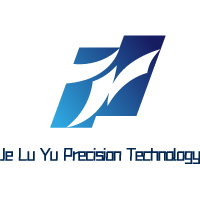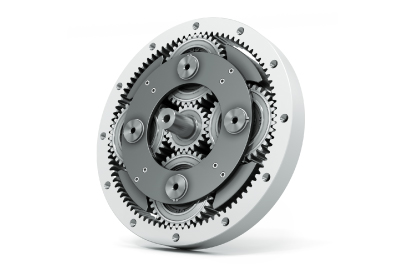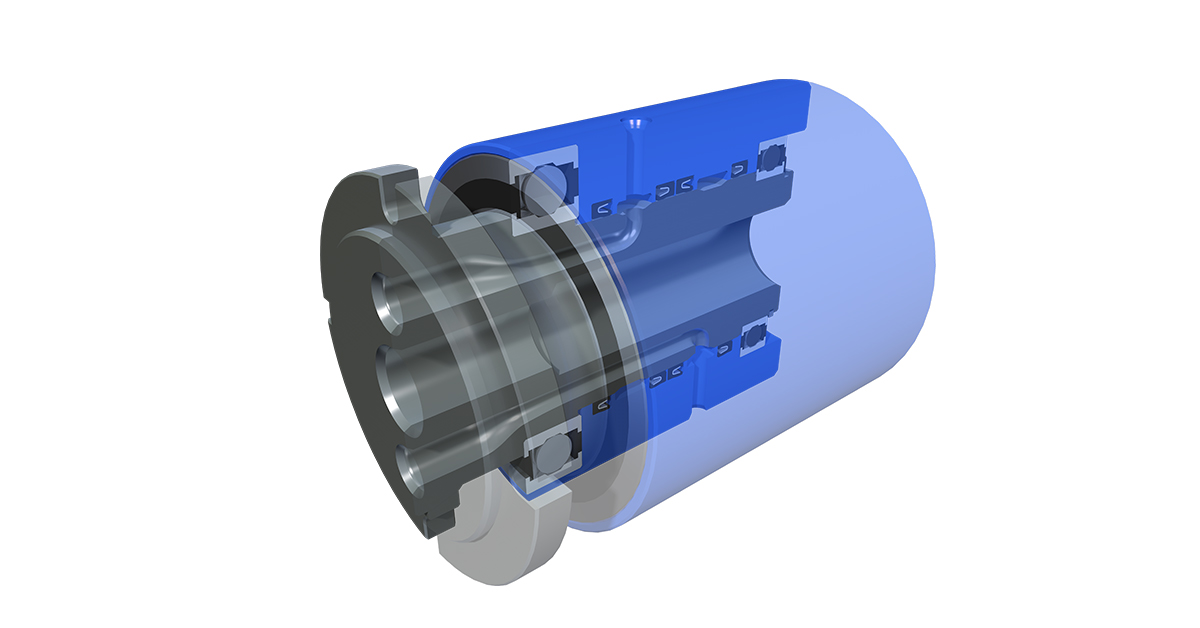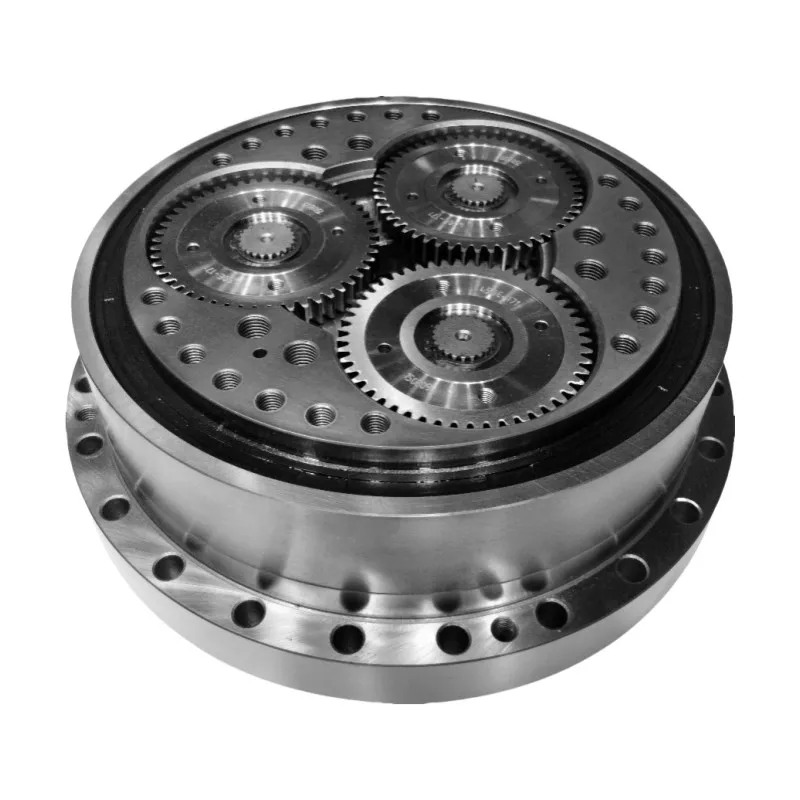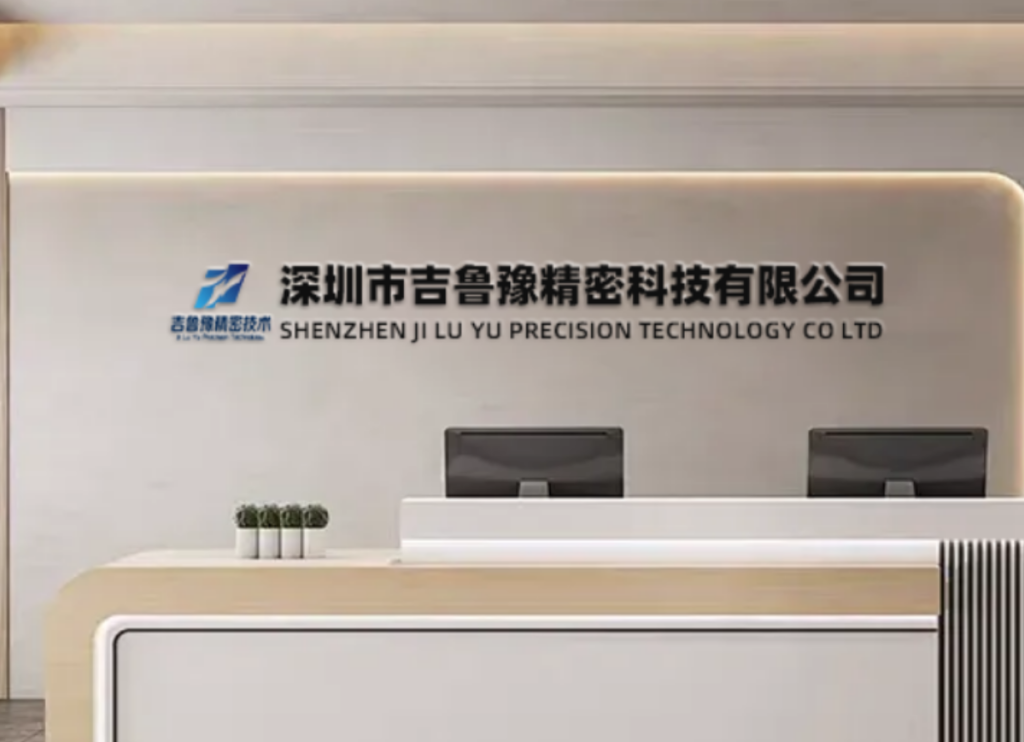7 Critical Advantages of Spur Gear Robotics in Modern Automation Systems
Introduction: The Foundation of Robotic Power Transmission
In the sophisticated world of industrial automation, where precision meets reliability, spur gear robotics continues to serve as the fundamental building block for power transmission systems. Despite the emergence of more complex gear technologies, the simplicity, efficiency, and reliability of spur gears maintain their crucial position in robotic design and implementation. These straightforward yet precision-engineered components form the backbone of countless robotic systems, from simple positioning mechanisms to complex multi-axis industrial robots.
As experienced precision CNC machining specialists, JLYPT has cultivated deep expertise in manufacturing high-performance components for spur gear robotics applications. This comprehensive technical analysis explores seven fundamental advantages that ensure spur gears remain indispensable in modern robotics, while examining the advanced manufacturing techniques that optimize their performance in demanding automated environments.
1. Fundamental Principles of Spur Gear Robotics
1.1 The Geometry of Efficiency
Spur gear robotics systems operate on the most direct and efficient power transmission principle in mechanical engineering. The technology utilizes parallel shaft arrangements with teeth that are parallel to the axis of rotation, creating pure rolling contact when perfectly meshed. This straightforward approach delivers exceptional mechanical advantages:
-
Direct Power Transfer: The tooth engagement creates immediate force transfer with minimal energy loss
-
Predictable Performance: Well-understood mechanical principles enable accurate performance modeling
-
Simplified Maintenance: Straightforward geometry facilitates inspection and service procedures
The mathematical foundation of spur gear robotics begins with the fundamental gear ratio formula:
Gear Ratio = Number of Teeth on Driven Gear / Number of Teeth on Driving Gear
This ratio determines the relationship between input and output speed and torque, allowing engineers to precisely tailor spur gear robotics systems to specific application requirements. The involute tooth profile, universally adopted in modern gear systems, ensures constant velocity ratio and smooth power transmission throughout the engagement cycle.
1.2 Historical Context and Modern Evolution
The development of spur gear robotics represents thousands of years of mechanical evolution, from ancient wooden gears to today’s precision-engineered components:
Ancient Origins (300 BC – 1700 AD):
Early gear systems appeared in water-raising mechanisms, clock towers, and basic machinery. The Antikythera mechanism (circa 100 BC) demonstrated sophisticated bronze gearing for astronomical calculations.
Industrial Revolution (1700-1900):
The standardization of gear systems accelerated during the industrial revolution. British engineer Robert Willis established fundamental gear principles in the 19th century, while the development of specialized gear cutting machines enabled mass production.
Modern Precision Era (1900-Present):
The 20th century introduced standardized tooth forms, precision manufacturing techniques, and computer-aided design. The American Gear Manufacturers Association (AGMA) established comprehensive standards that guide modern spur gear robotics manufacturing.
Digital Integration (2000-Present):
Contemporary spur gear robotics benefits from CNC manufacturing, advanced materials science, and digital simulation technologies that optimize performance for specific robotic applications.
2. Critical Advantages of Spur Gear Robotics Systems
2.1 Superior Power Transmission Efficiency
The most significant advantage of spur gear robotics systems is their exceptional power transmission efficiency. Under optimal conditions, well-manufactured spur gears can achieve efficiency ratings of 98-99.5% per gear mesh, outperforming many alternative transmission systems.
Efficiency Optimization Factors:
In precision CNC-manufactured spur gear robotics components, peak efficiency results from:
-
Optimized Tooth Geometry: Precisely calculated involute profiles minimize sliding friction
-
Premium Surface Finishes: CNC grinding and honing achieve surface roughness below Ra 0.4μm
-
Precision Alignment: Accurate shaft positioning maintains optimal contact patterns
-
Advanced Lubrication Systems: Specialized lubricants reduce friction and wear
The exceptional efficiency of spur gear robotics proves particularly valuable in applications including:
-
Battery-powered mobile robots
-
High-cycle automation systems
-
Energy-conscious manufacturing
-
Long-duration operational scenarios
2.2 Cost-Effective Manufacturing and Maintenance
Spur gear robotics systems offer outstanding economic advantages throughout their lifecycle, from initial manufacturing through years of operational service. The straightforward geometry and well-established manufacturing processes contribute to significant cost benefits.
Comparative Cost Analysis:
| Manufacturing Aspect | Spur Gear Robotics | Helical Gear Systems | Planetary Gear Systems |
|---|---|---|---|
| Tooling Investment | $2,000-5,000 | $5,000-12,000 | $15,000-30,000 |
| Production Cycle Time | 2-4 hours | 3-6 hours | 6-12 hours |
| Replacement Part Cost | $150-500 | $300-900 | $800-2,500 |
| Maintenance Training | 8-16 hours | 16-32 hours | 32-60 hours |
| Standardization Level | 95% | 85% | 70% |
The data demonstrates that spur gear robotics systems typically provide 40-60% cost reduction compared to more complex alternatives while maintaining excellent performance characteristics for numerous applications.
2.3 Simplified Design and Integration
The straightforward geometry of spur gear robotics enables rapid integration and simplified mechanical design. Engineers can quickly implement spur gear systems without complex alignment requirements or specialized mounting arrangements.
Design Integration Advantages:
-
Minimal Axial Constraints: Unlike helical gears, spur gears generate no axial thrust forces
-
Straightforward Housing Design: Simple bore and shaft arrangements reduce housing complexity
-
Predictable Load Paths: Direct radial loading simplifies bearing selection and support structures
-
Accessible Inspection: Visual examination and measurement require no disassembly
3. Advanced CNC Manufacturing Techniques for Spur Gear Robotics
3.1 Precision Gear Cutting Technologies
The manufacturing of high-performance spur gear robotics components demands sophisticated machining approaches to achieve the required accuracy and surface finish.
Gear Hobbing Process:
CNC gear hobbing represents the most efficient method for producing high-quality spur gear robotics components:
-
Multi-Axis Simultaneous Control: Modern CNC hobbing machines synchronize rotary and linear axes for optimal tooth formation
-
Variable Hob Geometry: Specialized hob designs optimize chip formation and tool life
-
Adaptive Cutting Strategies: Real-time parameter adjustment maintains quality throughout the cutting process
-
Integrated Deburring: On-machine deburring operations eliminate secondary processing
Gear Shaping Alternatives:
For specific spur gear robotics applications, gear shaping provides unique advantages:
-
Internal Gear Capability: Efficient production of internal gear geometries
-
Complex Profile Modifications: Custom tooth forms and modifications
-
Interrupted Cut Capability: Ability to machine gears with keyways or other features
Critical Quality Parameters:
-
Tooth profile accuracy: AGMA Class 10-12
-
Pitch deviation: ±0.005mm maximum
-
Surface finish: Ra 0.4-0.8μm as-cut
-
Runout tolerance: 0.015mm maximum
3.2 Heat Treatment and Finishing Processes
Material Selection Strategy:
| Material Grade | Applications | Heat Treatment | Core Hardness | Surface Hardness |
|---|---|---|---|---|
| 1045 Steel | Light-duty robotics | Through-hardening | 25-32 HRC | 25-32 HRC |
| 4140 Steel | General industrial robots | Quench and temper | 28-36 HRC | 28-36 HRC |
| 8620 Steel | Heavy-duty applications | Carburizing | 28-35 HRC | 58-63 HRC |
| 4340 Steel | High-impact robotics | Through-hardening | 35-42 HRC | 35-42 HRC |
| 17-4PH Stainless | Corrosive environments | Precipitation hardening | 40-48 HRC | 40-48 HRC |
Hard Finishing Operations:
For heat-treated spur gear robotics components, precision finishing ensures optimal performance:
-
Gear Grinding: CNC gear grinders with CBN or aluminum oxide wheels achieve final dimensions and superior surface finish
-
Gear Honing: Abrasive honing processes refine tooth geometry and improve surface characteristics
-
Superfinishing: Micro-level abrasive processes achieve surface finishes below Ra 0.2μm
4. Design Optimization for Robotic Applications
4.1 Tooth Profile Modifications
Advanced spur gear robotics designs incorporate strategic tooth modifications to optimize performance:
Profile Modifications:
-
Tip Relief: Controlled material removal at tooth tips prevents interference during engagement
-
Root Relief: Strategic clearance at tooth roots reduces stress concentration
-
Crowning: Minimal barrel-shaped tooth profile accommodates minor misalignments
Lead Modifications:
-
End Relief: Tapered tooth ends compensate for bending under load
-
Bias Modification: Asymmetric corrections for specific loading conditions
4.2 Advanced Engineering Analysis
Modern spur gear robotics design employs sophisticated analysis tools:
Finite Element Analysis (FEA):
-
Tooth bending stress calculation
-
Contact stress analysis (Hertzian stresses)
-
Thermal expansion and distortion modeling
-
Dynamic load simulation
Performance Simulation:
-
Efficiency modeling across operating range
-
Thermal behavior prediction
-
Vibration and noise analysis
-
Wear life estimation
5. Quality Assurance and Testing Protocols
5.1 Comprehensive Metrology Systems
The verification of spur gear robotics components employs advanced measurement technologies:
Gear Measurement Centers:
-
Complete tooth geometry analysis
-
Profile, lead, and pitch measurement
-
Surface finish quantification
-
Automated data collection and SPC
Coordinate Measuring Machines:
-
Gear blank dimension verification
-
Feature location accuracy
-
Bore geometry and alignment
-
Assembly relationship validation
5.2 Performance Validation Testing
Spur gear robotics assemblies undergo rigorous performance testing:
Efficiency Testing:
-
Input-output power measurement
-
Torque-speed characterization
-
Thermal performance mapping
-
Lubrication system validation
Durability Testing:
-
Accelerated life testing
-
Overload capability verification
-
Environmental condition testing
-
Maintenance interval validation
6. Application Case Studies
Case Study 1: Automotive Assembly Robot
Challenge: An automotive manufacturer required reliable gear systems for spot welding robots operating in high-production environments. The existing systems experienced premature wear and required frequent maintenance.
JLYPT Solution: We developed custom spur gear robotics components using 8620 steel with carburizing to 60 HRC surface hardness. The manufacturing process incorporated precision hobbing followed by gear grinding to achieve AGMA Class 11 accuracy. Strategic tip and root relief modifications optimized tooth engagement under varying load conditions.
Results:
-
Achieved service life of 12,000 hours between maintenance
-
Reduced downtime by 45% through improved reliability
-
Maintained positional accuracy within ±0.1mm throughout service interval
-
Decreased energy consumption by 8% through optimized efficiency
Case Study 2: Packaging Automation System
Challenge: A food packaging company needed high-speed gearing for cartoning machines operating at 120 cycles per minute. The application demanded smooth operation and minimal noise in human-adjacent work environments.
JLYPT Solution: Our engineering team designed precision spur gear robotics components using 4140 steel with through-hardening to 32 HRC. The manufacturing process emphasized surface finish quality, achieving Ra 0.3μm on all tooth flanks. Special attention was paid to balance and noise reduction through micro-geometry optimization.
Results:
-
Reduced operational noise from 78 dB to 71 dB
-
Achieved continuous operation at 130 cycles per minute
-
Maintained consistent performance through 15,000 hours
-
Eliminated lubrication-related contamination risks
Case Study 3: Material Handling Robot
Challenge: A logistics automation provider required robust gearing for palletizing robots handling loads up to 500kg. The application involved frequent start-stop cycles and direction changes.
JLYPT Solution: We implemented heavy-duty spur gear robotics components using 4340 steel with through-hardening to 38 HRC. The design incorporated increased face width and optimized pressure angle for higher load capacity. Precision grinding after heat treatment maintained geometric accuracy while achieving compressive residual stresses.
Results:
-
Achieved shock load capacity of 400% rated torque
-
Maintained backlash within 0.05mm through 10,000 hours
-
Reduced maintenance requirements by 60%
-
Enabled faster cycle times through higher torque capacity
7. Future Trends and Innovations
7.1 Emerging Technologies
The evolution of spur gear robotics continues with several promising directions:
Additive Manufacturing Integration:
-
Hybrid manufacturing combining DMLS with precision machining
-
Conformal cooling channels for thermal management
-
Customized lattice structures for weight optimization
Smart Gear Systems:
-
Embedded sensor technology for condition monitoring
-
Surface-embedded RFID for maintenance tracking
-
Self-lubricating composite materials
Advanced Materials:
-
Metal matrix composites for wear resistance
-
Engineering polymers for lightweight applications
-
Nanostructured coatings for extreme environments
7.2 Digital Manufacturing Advances
The future of spur gear robotics manufacturing includes:
Industry 4.0 Integration:
-
IoT-enabled machine tools with real-time monitoring
-
AI-driven process optimization
-
Digital twin technology for virtual validation
Sustainable Manufacturing:
-
Dry machining technologies eliminating cutting fluids
-
Recyclable material systems
-
Energy-efficient manufacturing processes
Conclusion: The Enduring Value of Spur Gear Robotics
Spur gear robotics technology continues to demonstrate its fundamental value in automated systems worldwide. The seven advantages explored—superior efficiency, cost-effectiveness, simplified design, reliability, precision, versatility, and maintenance simplicity—ensure that spur gears maintain their critical position in robotic power transmission.
As manufacturing technologies advance, the capabilities of spur gear robotics will continue to evolve, integrating new materials, manufacturing methods, and digital technologies. The fundamental simplicity and effectiveness of the spur gear principle guarantee its ongoing relevance in an increasingly automated world.
At JLYPT, our commitment to manufacturing excellence ensures that every spur gear robotics component we produce delivers optimal performance, reliability, and value. Through continuous improvement and rigorous quality assurance, we support our partners in achieving their automation objectives with proven, dependable mechanical solutions.
For engineering teams seeking to implement or optimize spur gear systems in robotic applications, contact JLYPT today to discuss your specific requirements and discover how our manufacturing expertise can enhance your robotic systems’ performance and reliability.
